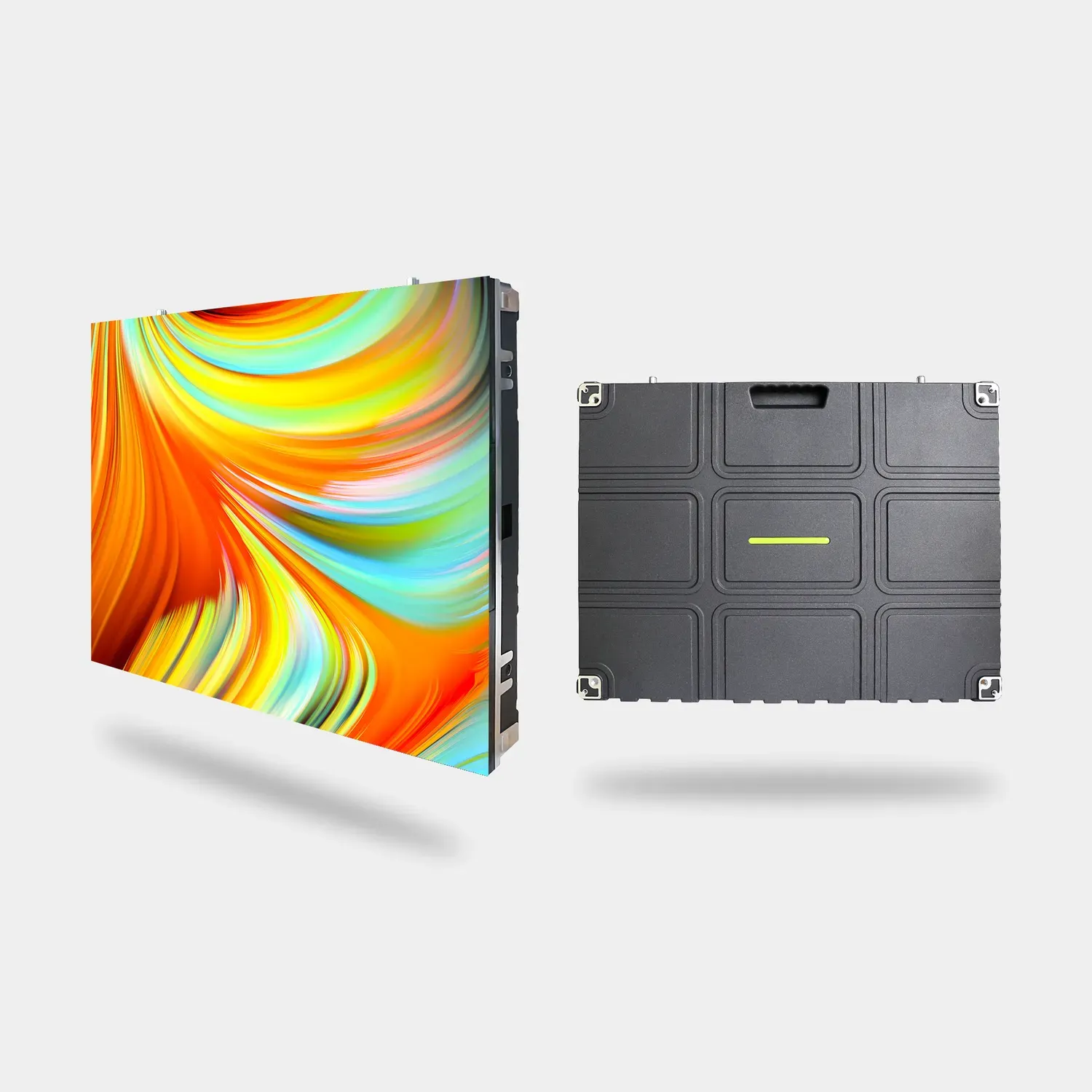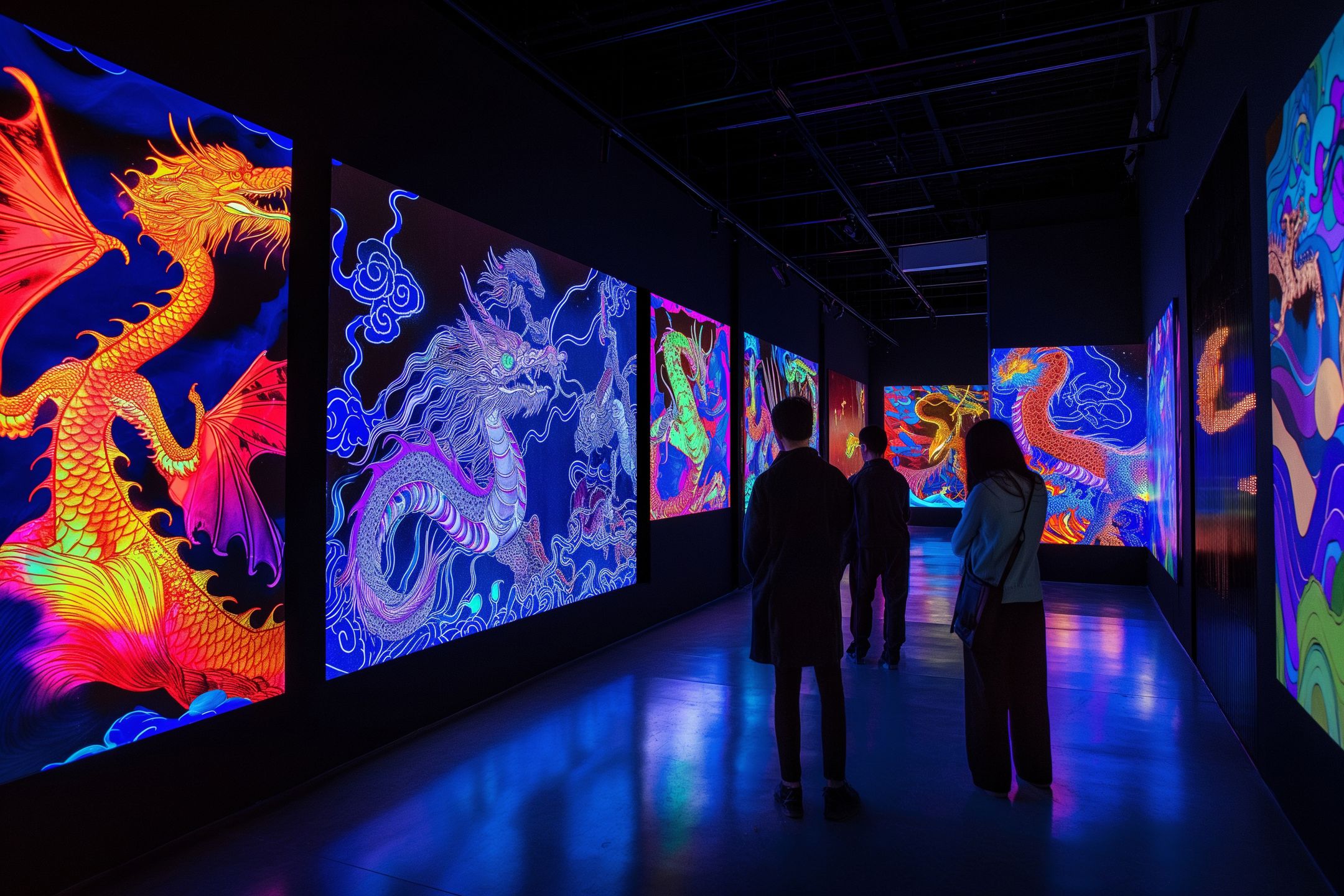
Get a Quote
What Is an LED Display Soft Module?
In today's fast-paced technological landscape, choosing the right LED display solution is crucial for achieving desired outcomes. With the introduction of LED display soft modules, exploring alternative options has become more pertinent than ever, allowing users to tailor their displays to specific requirements and preferences.
Understanding LED Display Soft Modules
Definition
LED display soft modules represent a new frontier in display technology, offering a flexible and adaptable alternative to traditional LED panels. These modules are characterized by their ability to bend, curve, and conform to various shapes, thanks to their construction from flexible materials like silicone and rubber.
Characteristics
What sets LED soft modules apart from their rigid counterparts is their flexibility and versatility. Unlike traditional LED panels, which are often rigid and inflexible, soft modules can be easily manipulated to fit curved surfaces or irregular shapes, making them ideal for creative installations and architectural designs.
Key Components and Construction Materials
LED display soft modules typically consist of LED chips embedded within a flexible substrate, encapsulated in a protective material such as silicone. This construction allows the modules to withstand bending and twisting without compromising the integrity of the LED components.
Modular and Versatile Design
One of the defining features of LED soft modules is their modular design, which allows users to connect multiple modules together to create larger displays of various configurations. This modular approach offers unparalleled flexibility, enabling users to customize their displays to suit specific requirements and environments.
Advantages of LED Display Soft Modules
Flexibility
The primary advantage of LED soft modules lies in their flexibility, allowing them to be curved, twisted, and shaped to fit virtually any surface or space. This flexibility opens up a world of creative possibilities, enabling designers and architects to create unique and immersive visual experiences.
Modular Design
Another key benefit of LED soft modules is their modular design, which allows for easy customization and scalability. Users can connect multiple modules together to create displays of any size or shape, making them ideal for both small-scale installations and large-scale projects.
Lightweight Construction
LED soft modules are significantly lighter than traditional LED panels, thanks to their construction from flexible materials. This lightweight design not only makes them easier to handle and install but also reduces structural requirements, making them suitable for a wide range of applications.
Versatility
From indoor advertising to outdoor installations, LED soft modules can be used in a variety of settings and applications. Their ability to conform to different shapes and surfaces makes them ideal for architectural installations, retail displays, event backdrops, and more.
Durability and Reliability
Despite their flexible design, LED soft modules are engineered to withstand the rigors of daily use. The LED components are safely housed within the flexible material, protecting them from dust, moisture, and impact damage. This ensures long-term reliability and performance, even in demanding environments.
Energy-Efficient Operation
LED soft modules are designed to be energy-efficient, consuming low amounts of power while delivering bright and vibrant visuals. This not only helps reduce energy costs but also minimizes environmental impact, making them a sustainable choice for display applications.
Applications of LED Display Soft Modules
Integration with Architectural Fixtures
LED display soft modules can seamlessly integrate with architectural fixtures, allowing for visually appealing installations on buildings, bridges, and other structures. Their flexible design enables them to conform to curved surfaces, adding a modern and dynamic aesthetic to any architectural environment.
Enhancement of Advertising
In advertising, LED soft modules offer endless possibilities for creativity and innovation. From eye-catching digital signage to larger-than-life billboards, these modules can transform ordinary advertising spaces into dynamic and engaging experiences that capture the attention of passersby.
Use in Events and Stages
LED soft modules are perfect for creating immersive visual effects at events and stages. Whether as vibrant backdrops for concerts or dynamic displays at conferences, these modules enhance the overall atmosphere and elevate the viewer's experience to new heights.
Application in Retail Environments
In retail environments, LED soft modules can be used for product showcases, storefront displays, and interactive installations. Their flexibility allows for creative design solutions that attract customers and create memorable shopping experiences.
Integration into Automotive Lighting
LED soft modules are also finding applications in automotive lighting, where their flexibility and versatility enable them to enhance both the aesthetics and functionality of vehicles. From headlights to interior lighting, these modules can be customized to fit the contours of any vehicle, creating a sleek and futuristic look.
Utilization in Wearable Technology
In the realm of wearable technology, LED soft modules are being incorporated into smartwatches, smart clothes, and other wearable devices. Their lightweight design and flexible construction make them ideal for integrating into wearable tech, adding a new dimension of functionality and style.
Inclusion in Artistic Installations
Artists and designers are increasingly using LED soft modules to create interactive art exhibitions and installations. These modules offer endless possibilities for creative expression, allowing artists to manipulate light and color in captivating ways that engage and inspire audiences.
Factors to Consider When Choosing LED Display Soft Modules
Understanding Project Objectives and Requirements
Before selecting LED display soft modules, it's essential to have a clear understanding of your project objectives and requirements. Consider factors such as the intended use, environment, and desired outcomes to ensure that the modules meet your specific needs.
Evaluating Flexibility and Compatibility
Evaluate the flexibility and compatibility of LED soft modules with your project needs. Determine whether you require modules that can bend, curve, or conform to specific shapes, and ensure that the modules you choose are compatible with your intended application.
Examination of Technical Specifications
Examine the technical specifications of LED soft modules, including pixel pitch, resolution, contrast, brightness, and color accuracy. Choose modules with specifications that align with your content requirements and viewing distance to achieve optimal clarity and visual impact.
Assessment of Durability and Reliability
Assess the durability and reliability of LED soft modules to ensure long-term performance and functionality. Consider factors such as the quality of materials, protection against environmental elements, and resistance to impact damage to determine the suitability of the modules for your project.
Consideration of Budget Constraints
Finally, consider budget constraints and cost-effectiveness when choosing LED display soft modules. Compare the prices of different modules and weigh them against their features, performance, and durability to find the best value for your investment.
By addressing these factors, you can make informed decisions when choosing LED display soft modules that meet your project requirements and deliver the desired results.
Comparison with Traditional LED Modules
Differences in Form Factor and Flexibility
LED soft modules differ from traditional LED modules in their form factor and flexibility. While traditional LED modules are rigid and inflexible, LED soft modules are constructed from flexible materials like silicone and rubber, allowing them to bend and conform to various shapes and surfaces.
Weight Considerations for Installation Convenience
LED soft modules are significantly lighter than traditional LED modules, making them easier to handle and install. This weight advantage reduces installation time and labor costs, particularly for large-scale projects where heavy equipment may be required to lift and position traditional LED panels.
Ease of Installation Compared to Traditional LED Modules
In terms of installation, LED soft modules may present some challenges compared to traditional LED modules. Traditional LED panels typically follow a straightforward installation process, whereas LED soft modules may require more complex integration into architectural fixtures or custom installations.
Operational Versatility as a Benefit of LED Soft Modules
One of the key benefits of LED soft modules is their operational versatility. Their flexible design allows them to be used in a wider range of applications and environments than traditional LED modules, making them ideal for creative installations and architectural designs.
Brightness Comparison Between LED Soft Modules and Traditional Options
When it comes to brightness, traditional LED modules may offer slightly better performance than LED soft modules. However, the difference in brightness may be negligible in most applications, and the flexibility and versatility of LED soft modules often outweigh any slight differences in brightness.
Cost Comparison Highlighting Potential Differences
In terms of cost, LED soft modules may be slightly more expensive than traditional LED modules due to their innovative design and construction. However, the benefits of flexibility, versatility, and ease of installation may justify the higher cost for many users.
Conclusion
In the rapidly evolving landscape of LED display technology, the innovation and versatility of LED display soft modules stand out as game-changers. From architectural marvels to immersive retail experiences and dynamic event setups, these modules redefine what's possible with digital displays.
At EACHINLED, we lead this revolution, providing top-tier LED display solutions that blend cutting-edge technology with unmatched service and support. Whether you're planning a large-scale installation or a smaller project, EACHINLED is your trusted partner every step of the way. With our expertise, dedication, and customer-centric approach, we ensure your vision becomes a reality, delivering stunning LED display solutions that exceed expectations.
Choose EACHINLED for your LED display needs and let us illuminate the world with extraordinary LED display experiences that captivate, inspire, and transform.


